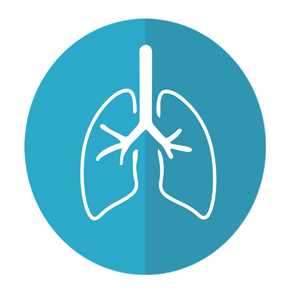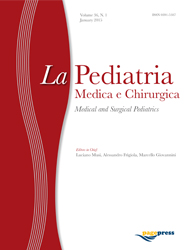Pediatric primary spontaneous pneumothorax: a comparison of treatment at pediatric surgery vs. thoracic surgery departments

All claims expressed in this article are solely those of the authors and do not necessarily represent those of their affiliated organizations, or those of the publisher, the editors and the reviewers. Any product that may be evaluated in this article or claim that may be made by its manufacturer is not guaranteed or endorsed by the publisher.
Authors
Management of pediatric Primary Spontaneous Pneumothorax (PSP) is controversial and based on guidelines on adults. Therapeutic strategies include: observation, needle aspiration, chest drain, or surgery. We aimed to assess: i) differences in the management of PSP in pediatric vs. adult departments; ii) risk of recurrence associated to each therapeutic choice; iii) management of “large” pneumothorax (i.e. >3cm at the apex on chest X-Ray); iv) role of CT scan in addressing the treatment. We reviewed all PSP treated at Pediatric Surgery Unit (PSU) and Thoracic Surgery Unit for adults (TSU) in a 10-year period (2011 to 2020). We included a total of 42 PSP: 30/42 1st episodes and 12/42 recurrences. Among the 30/42 1st episodes, 15/30 were managed in the PSU and 15/30 in the TSU. Observation was significantly most common among PSU patients (9/15, 60%) vs. TSU cases (1/15, 6.7%; p=0.005]. Chest drain placement was reduced in PSU (3/15, 20%) vs. TSU (12/15, 80%; p=0.002). Observational was associated with a reduced risk of recurrence (0/10, 0%) compared to chest drain (7/15, 46.7%; p=0.01). Management of 20/42 “large” pneumothorax was: 4/20 (20%) observation, 10/20 (50%) chest drain, 2/20 (10%) needle aspiration, 4/20 (20%) surgery. Twentythree/ 29 PSP (79.3%) underwent CT-scan after the first episode. Bullae were detected in 17/23 patients and 5/17 (29.4%) had seven episodes of recurrence. PSP patients treated by PSU were more likely to receive clinical observation. Those managed by TSU were mostly treated by chest drain. Observation seems an effective choice for clinically stable PSP, with low risk of recurrence at a mid-term follow-up. CT-scan seems not to detect those patients at higher risk of recurrence.
How to Cite

This work is licensed under a Creative Commons Attribution-NonCommercial 4.0 International License.
PAGEPress has chosen to apply the Creative Commons Attribution NonCommercial 4.0 International License (CC BY-NC 4.0) to all manuscripts to be published.






